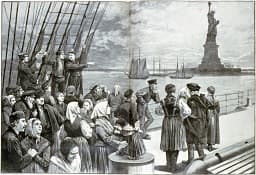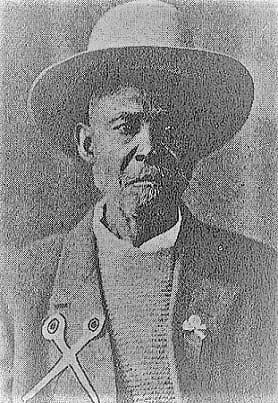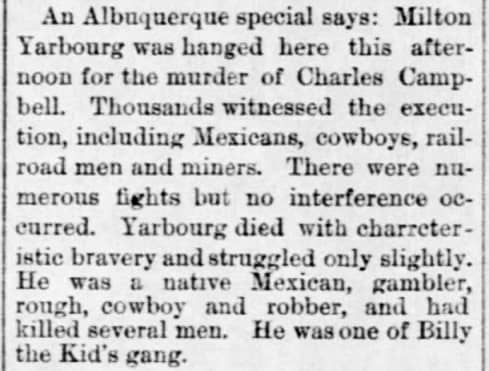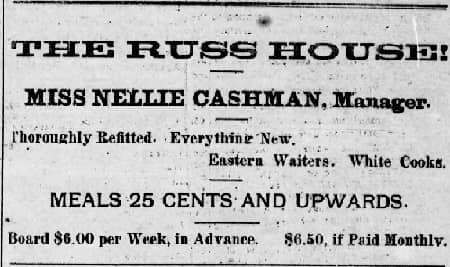US immigration 1800s Era, was the decade of a prime influx of people from Europe.


Where Were Immigrants Coming From
in the 1800s?
US immigration in the 1800s was overwhelmingly from Ireland, England and the Scandinavian countries. They came from other countries in Europe, too. Asia also was a source of immigration during the 1800s.5 Often overlooked are the forced immigrants – those brought in through slavery.
Reasons for Immigration to America
People looked for opportunities elsewhere when land ownership in their native country became difficult, governments were oppressive, when facing religious persecution, with food scarcity, or when they couldn’t support themselves and their families.1
Ireland had a severe famine, often called the “Great Hunger.” It began with potato blight, but influenced by Political Maneuvers. Crops from their own island were shipped to England, regardless of Ireland’s need. Desperate victims, approximately one million, died during the mid 1800s.

NEWS BY TELEGRAPH (Special To The Miner)

Two million 1800s Irish immigrants escaped this “potato famine” by scraping together funds. Some only went as far as where the food went – Britain: particularly Liverpool, Scotland, Southern Wales. But many Irish immigrants went to Australia, Canada and the United States.2
To their credit, about half the immigrants were women: 52% exactly! When one family member arrived and found employment, they used savings to help others get passage.10
The main Asian ethnic group of 1800s immigrants were Chinese. Seafarers and merchants came first. The California gold rush attracted more. Others for work: agriculture, serving households, fisheries the railroad. Many also escaping the Taiping Rebellion.4
Western Immigration & Settlers
in the 1800s
During The 1800s, immigrants from Europe often trekked Westward. Their goal was good, fertile farmland, especially California. But they met stark deserts and difficult mountain ranges. Some settled in suitable areas prior to reaching original goals.7
Another motivation was the California Gold Rush. Chinese immigrants, others from South America, Mexico, and also Europe headed there to seek riches.7
Freed former slaves (recent African ancestry) came West in the 1800s. After the Constitution’s 13th Amendment was ratified at the end of 1865.8 Many had experience with cattle on plantations, farms and ranches. They used that experience for cowboy work. They found more acceptance and camaraderie within ranks of the cowboy unit, than in general public life.9
About 1/4 of 1800s Cowboys
Were African Americans


All these ethnic groups made their way to Tombstone Arizona during this time of widespread US immigration in the 1800s. Native Americans lived on the land, and battled these new people laying claim to it.
Tombstone’s population in 1882 was itemized as 559 Irish, 423 Hispanics, and 245 Chinese. There was also a sizable Jewish and German population.6
Irish Immigrants in the 1800s Wild West
- Patrick Joseph Sullivan – Born in County Cork. Settled in Caspar Wyoming as a sheep rancher. Became the town mayor, then a Wyoming senator.

- Billy the Kid – New York born as Henry McCarty. He used an alias William H. Bonney, but most know his famous outlaw name.
- His widowed mother remarried and moved to Silver City, New Mexico when he was about 11 years old.
- A few years later his mother died. That’s when he began stealing, getting in trouble.
- He went to South-East Arizona, working on the Hooker Ranch.
- But mostly, Billy the Kid was in New Mexico.

US Immigration
1800s – Tombstone’s Ethnic Groups
Irish Immigrants
Millions of Irish immigrants came to America in the 1800s. Once landed on the East coast many came West to escape extreme discrimination. Its origin was from British traditions in their native land, from British Isles immigrants. Continuing in Eastern American cities that the Irish tried adopting as their own.
Many came to mining camps, hoping that discrimination wouldn’t follow them West. Irish were part of Tombstone’s population.
Some were recent Irish 1800s immigrants to the U.S., others were second generation. They held strong connections to their “mother country.” This support system helped withstand discrimination and improve their own lives in their new country. A part of that was boosting Ireland’s organizations:

- Irish Land League – Local organization, a branch of that in Ireland. They sponsored events at the Tombstone Driving Park. Typically Irish festivals.
1800s Arizona Irish Immigrants

- Nellie Cashman – Among the most well known! Born in 1845, as Ellen Cashman in County Cork.

- Around 7 years old, she immigrated to Boston with her mother and sister. Migrating to San Francisco, when Nellie was 20 years old.
- Her first business was in a Nevada mining town. The 1873 Pioche Daily Record advertised the Boarding House of Miss N. Cashman, Proprietress. She left before the town’s mines gave out. She seemed to have an instinct for that!
- Next she went to British Columbia, then Tucson AZ, then Tombstone. She led funding for construction of Tombstone’s Catholic Church, a Historic Site today.
- She promoted the local Irish Land League. She ran business ventures in town, including the Russ House. She tried staying neutral in Tombstone’s political divisions. But observing her historically, her method seemed to include, somehow, playing both sides of the fence!

- John Harris Behan – Prominent man in Tombstone’s history. Born in Kansas City, Missouri.
- His father was from County Kildare, Ireland. John’s heritage was half Irish.
- He moved to California as a young man. He worked in mining and for a Stagecoach company.
- During the Civil War, John joined Carleton’s Column of Union Volunteers, bringing him to Arizona. He fought in the Battle of Apache Pass. Afterwards he worked in Tucson. Then obtained a government clerk position in Prescott.
- In Prescott he got into mining and real estate. He worked sawmills, in bars and with stage lines. Accolades from the Indian battle got him his first lawman position. Later John was elected County Sheriff and then to the legislature. He was in & out of law and politics. He married, but gained a promiscuous reputation. He began his association with Josephine Marcus at that time.
- In 1880 he moved to Tombstone. With law experience, John was elected Cochise County Sheriff. He then became familiar with Ike Clanton, John Ringo & Curly Bill Brocius. Became more notorious from involvement with events surrounding the Gunfight at the OK Corral.

- Ned McGowan – A Crazy Career: the Notorious!?
- Edward “Ned” was born in Philadelphia of Irish parents. Growing up there, became a lawyer and got into politics. Controversial pretty much immediately. With a temper, was in a knife fight in the state legislature! People also said he was quite the gregarious personality!
- Ned McGowan (no apparent relation to us, by the way!) went West to California. Was continually at odds with a vigilante committee running San Francisco. Eventually he fled the area, to British Columbia, East of Vancouver.
- Still controversial! Some SF Vigilance Committee members were there and continued feuding with him. Area native peoples, miners, Royal troops and local politicians all became involved. Provoking racial and international tensions.
- McGowan led friends into brawls, with opposition instigated by the vigilantes. The event known as McGowan’s War: not a gunshot fired, eventually settled in court!

- Ned left B.C. in February 1859, lived in Tombstone AZ by mid-July, 1882. Becoming a well-known local. In September 1882 he was requested to second a duel between newspaper editors, one at the Epitaph. Dr. Goodfellow came along for treatment as necessary. A dispute about chosen firearms deactivated the plan, and the duel was nastily canceled on-site!
- He worked awhile in the Oriental Saloon on Allen Street, as a Faro Gambling look-out. During one game, a player shot another. Ned saw the whole thing. He ended up testifying at the trial.
- In early 1884 Ned received a Federal appointment in Washington DC. He returned to California in mid 1889. Ned met a sad end. Dying in San Francisco at St. Mary’s Hospital, at age 84. He’s buried in Holy Cross Cemetery.
From the June 14, 1893 Tombstone Epitaph, Page 2

This Epitaph article goes on to say the duel "trouble arose over some newspaper articles" and also states "McGowan was at one time clerk of the 9th legislature at Prescott and was well known all over the territory."
More U.S. immigration
1800s Irish to Tombstone
- Mary & Martin Costello – An Irish heritage pioneering name you’ll notice in the Tombstone Cemetery. In fact roaming that cemetery, you’ll see quite a few Irish names there. Those buried in the 1880s and early 1900s, down through today.
- Charles L. Cummings – Pioneering family in Tombstone. Charles came to town in 1880.
- A determined businessman, he first worked for the mines and water company.
- Owned a mining interest, but opened The Tombstone Pharmacy.
- Served as City Treasurer and at the state legislature.
- Became president of the First National Bank of Tombstone.
- He’s buried in The City Cemetery.
- Thomas H. Corrigan – This Irish immigrant opened one of the first saloons in Tombstone’s Old Wild West.
- His saloon is apparently the earliest documented in town, opened in 1879: the Alhambra.
- Had a stunning bar with a sort-of throne-like Gothic chair in the center.
- Was on Allen, midway between 4th & 5th.
- Frank & Tom McLaury – The brothers gunned down, killed by the Earps & Doc Holliday in Tombstone’s gunfight.
- The family’s history was sheep farming. A tradition in rural Ireland.
- Both brothers born in upstate NY. Their father was educated, became a lawyer. Another brother was a lawyer.
- The family moved to Iowa when Frank & Tom were boys.
- As young adults, they came to Arizona. The rest is history!
Mexicans in 1800s Tombstone
The Mexican Community did intermix into Tombstone town. Arizona Territory had been part of Mexico, and this ethnic group lived there already. Many Mexicans got involved in mining. Although Mexicans worked alongside white miners, they weren’t always treated the same. In social circumstances, sometimes they all got along and were part of a group. Other times there were strained relations.
The Mexicans often lived in a specific part of town. Referred to as the “Mexican Quarter.” It sort-of covered the block of Fremont south to Allen Street, between 1st and 2nd Streets.
The Mexican Community Got Little News Attention
Unless Something Went Wrong

Chinese Immigrants – 1800s in Tombstone
The Chinese population mainly kept to themselves, in their own community. Chinatown was contained in a few blocks. Almost to Fremont south to Toughnut, from around 1st to 3rd Streets. However, there were numerous Chinese immigrants who lived throughout other areas of the Tombstone vicinity.
Commercial interests sought Chinese labor to work the mines and railroads. Many Asians also farmed and sold vegetables to area markets. Some worked as cooks and household domestics. They opened laundries.
Local residents were suspicious of this unique group, with customs that seemed odd. Some local Tombstone residents even formed an “Anti-Chinese League” – which put pressure on businesses to rid Tombstone of the “yellow peril.” Boycotting those using Chinese. It also instigated some violent incidents.
The contractor building the Courthouse in Tombstone began using four Chinese brick-makers. The League was outraged, demanding explanation. The contractor did: we “could not get white labor to do the same kind of work. The white men habitually worked a day or two and quit.”6,13

But the anti-Chinese sentiment got support with the government’s Chinese immigration act: the Chinese Exclusion Act of 1882. Naturalization of Chinese already in the U.S. became illegal. An effect was a cut-off of further Chinese immigrants to America for the next 61 years!11
Even so, some Tombstone Chinese in town succeeded, and became respected. Well known was China Mary – Mary Sing. Also Can Can restaurant manager, Quong Gu Kee. Both are buried at Boothill.
Other European
to U.S. Immigration in 1800s
Other European Immigrants made their way to the Wild West, and to Tombstone Arizona. Most were from Germany, Scandinavia, and Great Britain.6
The First Non-Native Explorer of Tombstone
An 1848 German immigrant, Frederick Brunckow was the first person to investigate mining in Tombstone’s territory. With a mining degree, plus some European mining experience, he was hired by an American mining company. He did well and was rapidly promoted.In 1859 he began his own company with three professional miners and Mexican laborers.6 See the Whole Brunckow Mine Story>
1800s Tombstone Jewish Immigrants

Jews also immigrated, to escape religious persecution in Eastern Europe. After arriving in the U.S., some came West.
Fred Harvey was ahead of his time in hiring practices when beginning his hotel/restaurant chain that followed stops on the Santa Fe railroad in the 1800s. Two of his prized employees were Jewish.12
A small Jewish population came to the Old West, settling in Tombstone Arizona.6
Jews also immigrated to various other booming towns in the West, to have the chance to develop opportunities available. Many have descendants active in those towns til this day.

References
1 Library of Congress (n.d.) Immigration to the United States, 1851 – 1900. Timeline Retrieved from loc.gov/teachers/classroommaterials/ presentationsandactivities/presentations/timeline/riseind/immgnts/
2 Foster, R.F. (1988). Modern Ireland. P. 268. Penguin Group
3 Parsons, George W. (1996). A tenderfoot in Tombstone. The private journal of George Whitwell Parsons: The turbulent years, 1880-82. p 72, Westernlore Press, Tucson AZ.
4 Ward, G. (1997). The West: An Illustrated History. Dayton, IL: Little, Brown & Co. , Back Bay Books.
5 National Geographic Society (1996-2019). Immigration to the U.S. in the late 1800s. Retrieved from nationalgeographic.org/photo/immigration-1870-1900/
6 Bailey, L.R. (2004). Tombstone, Arizona: “Too tough to die” The rise, fall, and resurrection of a silver camp; 1878 to 1990. Westernlore Press, Tucson, Arizona. A prime general resource.
7 Slatta, R.W. (Jan. 19, 2006). Western frontier life in America. World Book Online Reference Center. World Book, Inc. Worldbookonline.com/wb/Article?id=ar599110. Retrieved from hfaculty.chass.ncsu.edu/slatta/cowboys/essays/front_life2.htm
8 History.com Editors (June 14, 2019). Slavery abolished in America. HISTORY: A&E Television Networks. Retrieved from history.com/this-day-in-history/slavery-abolished-in-america
9 Nodjimbadem, K. (FEB. 13, 2017). The Lesser-Known History of African-American Cowboys. Retrieved from smithsonianmag.com/history/lesser-known-history-african-american-cowboys-180962144/
10 Maurer, E.L. (MARCH 14, 2017). Raising a glass to Irish American Women. National Women’s History Museum. Retrieved from womenshistory.org/ articles/raising-glass-irish-american-women
11 History.com Staff (June 7, 2019). Chinese Exclusion Act. HISTORY: A&E Television Networks. Retrieved from history.com/topics/immigration/chinese-exclusion-act-1882
12 Fried, S. (Aug. 3, 2010). The Jews who tamed the Wild West. The New York Jewish Week. Retrieved from jewishweek.timesofisrael.com/the-jews-who-tamed-the-wild-west/
13 The Daily Epitaph, June 16 & June 18, 1882.
Newspaper clippings thanks to our subscription at https://www.newspapers.com/



